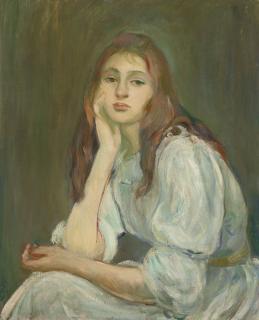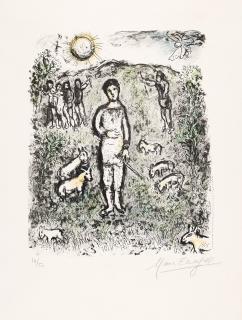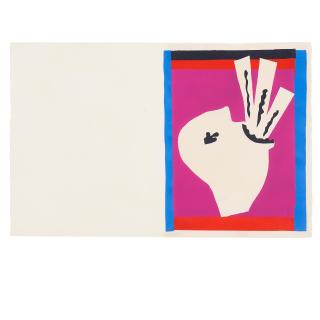Berthe Morisot 1841 - 1895
The artist Berthe Morisot
- French Impressionist painter.
- Exhibited at the prestigious Paris Salon.
- Édouard Manet portrayed her several times.
Little is known about Berthe Marie Pauline Morisot's childhood. She was born in 1841 in the French town of Bourges and received an education in piano and singing lessons befitting a middle-class daughter. The teaching of drawing and watercolour painting was also common. Art academies were not open to women in France until 1897, when Morisot had already been dead for two years.
Through her mother's regular evening parties, Morisot met several artists, including Henri Fantin-Latour and the Swiss sculptress Adèle Colonna. In 1864 Berthe, like her sister Edma, succeeded in exhibiting two paintings at the Paris Salon. The annual art exhibition, which had existed since 1667, developed into the hub of the French cultural world in the 19th century. The jury favoured academic painting, only allowing new developments such as Realism and Impressionism to a limited extent.
For Morisot, who had submitted small-format paintings, which probably increased her chances of being accepted, this marked a first step towards becoming a professional painter. Between 1865 and 1873, Morisot participated in the Salon a further six times, with one or two works each. In 1869 Edma married and gave up her career as a painter. For Berthe, this meant the loss of an important partner in her life. Her blossoming friendship with Édouard Manet helped her to get back on track.
Her 1869 painting The Port of Lorient is considered an early high point in her oeuvre. Morisot achieves an astonishing effect of depth, some parts are painted in precisely balanced colours, others appear deliberately unfinished. From the 1870s onwards, Morisot took part in the Impressionist exhibitions. Contemporary critics saw her as »the only true Impressionist« of this group. Morisot died of pneumonia in Paris in 1895.
Die Künstlerin Berthe Morisot
- Französische Malerin des Impressionismus.
- Stellte im prestigeträchtigen Pariser Salon aus.
- Édouard Manet porträtierte sie mehrfach.
Über die Kindheit Berthe Marie Pauline Morisots ist wenig bekannt. Sie wurde 1841 in der französischen Stadt Bourges geboren und erhielt eine für Töchter der Mittelschicht standesgemäße Ausbildung in Klavier- und Gesangsunterricht. Üblich war auch die Lehre des Zeichnens und Aquarellmalens. Kunstakademien standen Frauen in Frankreich erst ab 1897 offen, als Morisot bereits zwei Jahre verstorben war.
Durch die regelmäßigen Abendgesellschaften ihrer Mutter lernte Morisot einige Kunstschaffende kennen, unter anderem Henri Fantin-Latour und die Schweizer Bildhauerin Adèle Colonna. Im Jahr 1864 gelang es Berthe, wie auch ihrer Schwester Edma, zwei Bilder im Pariser Salon auszustellen. Die seit 1667 bestehende jährliche Kunstausstellung entwickelte sich im 19. Jahrhundert zum Dreh- und Angelpunkt der französischen Kulturwelt. Die Jury bevorzugte die akademische Malerei, neue Entwicklungen wie den Realismus und den Impressionismus ließ sie nur in geringem Maße zu.
Für Morisot, die kleinformatige Gemälde eingereicht hatte, was wohl ihre Chancen auf eine Aufnahme erhöht hatte, bedeutete dies einen ersten Schritt hin zur professionellen Malerin. Zwischen 1865 und 1873 nahm Morisot weitere sechsmal am Salon teil, mit je ein oder zwei Werken. Im Jahr 1869 heiratete Edma und gab ihre Karriere als Malerin auf. Für Berthe brach damit eine wichtige Partnerin für ihren Lebensweg weg. Die aufblühende Freundschaft zu Édouard Manet half ihr, wieder in die Spur zu finden.
Ihr 1869 entstandenes Bild Der Hafen von Lorient gilt als früher Höhepunkt ihres Schaffens. Morisot erzielt eine verblüffende Tiefenwirkung, farblich ausgewogen sind manche Partien genaustens gemalt, andere erscheinen bewusst unfertig. Ab den 1870er-Jahren nahm Morisot an den Impressionisten-Ausstellungen teil. Zeitgenössische Kritiker sahen in ihr »die einzige echte Impressionistin« dieser Gruppe. Morisot starb 1895 in Paris an einer Lungenentzündung.
Berthe Morisot in a nutshell
The most famous self-portrait from 1885, when Morisot was in her mid-40s, is an oil painting on canvas. It is housed in the Musée Marmot-Claude Monet. Painted in bold brushstrokes, the painting has the look of a portrait thrown on quickly and exudes passion. It is done in earthy tones: Morisot wears brown clothes against a beige background. Only two corsages and a black scarf stand out. She depicted herself with graying hair at an advanced age, her look showing a youthful strength and determination. It is not to be confused with the famous portrait Berthe Morisot with Bouquet of Violets, made of her by Édouard Manet in 1872.
The Cradle is an oil painting by Morisot from 1872. It is the first thematic exploration of motherhood, which would become a major theme of Morisot's artwork in the years to come. This painting depicts her sister Edma with her newborn daughter asleep in her cradle. The calmness of the content is countered by diagonal compositional lines that build a certain tension, perhaps a reference to rare moments of calm in motherhood.
Morisot exhibited the painting at the first Impressionist exhibition in 1874, where it received much praise but was not bought. Today it can be seen in the Musée d'Orsay in Paris.
Häufige Fragen zu Berthe Morisot
Das bekannteste Selbstporträt von 1885, als Morisot Mitte 40 war, ist ein Ölgemälde auf Leinwand. Es befindet sich im Musée Marmotten-Claude Monet. Das Bild ist in kräftigen Pinselstrichen gemalt, wirkt wie ein schnell hingeworfenes Porträt und strahlt Leidenschaft aus. Es ist in erdigen Tönen gehalten: Morisot tragt braune Kleidung vor beigem Hintergrund. Einzig zwei Ansteckblumen und ein schwarzes Halstuch stechen hervor. Sie stellte sich mit ergrauten Haaren im fortgeschrittenen Alter dar, ihr Blick zeugt von einer jugendlichen Stärke und Entschlossenheit. Es ist nicht zu verwechseln mit dem berühmten Porträt Berthe Morisot mit Veilchenstrauß, das Édouard Manet 1872 von ihr anfertigte.
Die Wiege ist ein Ölgemälde von Morisot aus dem Jahr 1872. Es ist die erste thematische Auseinandersetzung mit Mutterschaft, das in den kommenden Jahren zu einem Hauptthema von Morisots Kunstwerken werden sollte. Dieses Bild zeigt ihre Schwester Edma mit ihrer neugeborenen, in der Wiege schlafenden Tochter. Die inhaltliche Ruhe ist diagonalen Kompositionslinien entgegengesetzt, die eine gewisse Spannung aufbauen, vielleicht ein Hinweis auf seltene Ruhemomente in der Mutterschaft.
Morisot stellte das Bild 1874 auf der ersten Impressionistenausstellung aus, wo es viel Lob erhielt, aber nicht abgekauft wurde. Heute ist es im Musée d’Orsay in Paris zu sehen.

















































